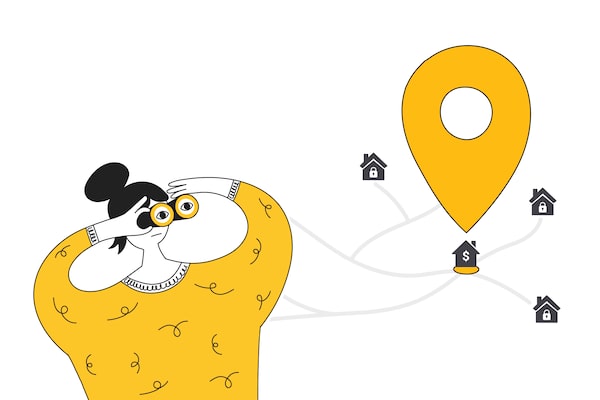
Photo illustration/ SOURCE: iStock
Paycheque Project is a non-judgmental look at how young adults in Canada are spending their money. If you would like to participate, send us an e-mail.
Name, age: Courtney, 35
Annual income: $80,000
Debt: $0
Savings: $48,000 in savings account; $81,000 in TFSA; $50,000 in RRSP
What she does: sales representative for a consumer package goods company
Where she lives: Kitchener, Ont.
Top financial concern: “I want to buy a house but it’s proving to be very difficult. ... Maybe I’ll rent for the rest of my life.”
Courtney’s achievements – $179,000 in savings, a secure, good-paying job – have been hard-won. A sales rep at a large consumer package goods firm, she worked her way up from the warehouse floor, where she started in her 20s.
Trained as a physiotherapy assistant, she jumped to retail seven years ago. Her industry is very competitive, she says, adding she feels she should be earning $20,000 more than her current $80,000 salary. She hopes to land a better-paying role within the next year.
She is well aware that she’ll need the extra income if she’s going to be able to afford a home in Kitchener’s overheated housing market. Several years ago, she tried to purchase a duplex with her friend. “We were bidding $800K and things were going for $875K to a million,” she says. Although purchasing a condo was an option a few years ago, Courtney was laid off for a brief period, setting her back. “Now a condo is $550K to $600K and I don’t qualify for that either.” She is still holding out hope for an income property.
Currently, she pays $1,500 in rent for a two-bedroom unit in her friend’s home. She tries to save as much as possible, although postpandemic she likes to socialize, spending $400 a month eating out and meeting up with friends. She also recently travelled to Banff, a short vacation that cost $700.
Courtney is also looking at investing more to grow her money. She currently has $6,000 invested in exchange-traded funds and Canadian bank stocks within her tax-free savings account – a foray she made recently after watching a video of female investors on TikTok. She’s currently toying with investing another $1,000 rather than make a large contribution to her RRSP, which she did in 2021. Retirement is currently not a focus for her.
In the meantime, Courtney is watching as many of her friends are getting ahead, many with two incomes and lots of support. Other millennials she knows are in her situation, trying to find an affordable place to live.
“I just want a house. There’s a lot of societal pressure.”
Her typical monthly expenses:
Investment and savings: $350
$200 to RRSP. “Last year at tax time I put in $4,000.” This year, she tries to put in $200 a month.
$150 to TFSA, which comprises $70,000 in savings, $6,000 in ETFs and Canadian bank stocks. “I have only recently been learning about stocks.”
Household and transportation: $1,810
$1,500 on rent. “It’s a two-bedroom in my friend’s house and includes utilities – it’s an older home. I’m trying to get an income property – in Kitchener the market has dropped but it hasn’t become affordable. Maybe I’ll rent for the rest of my life.”
$17 on renter’s insurance.
$33 on car repairs. “I have a 2021 Honda Accord Hybrid that I purchased last year in full and don’t have a lot of repairs or maintenance. My old car was literally smoking at the end – I bought it used.”
$200 on gas.
$60 on cellphone.
$0 on Internet (included in her rent).
Food and drink: $779
$350 on groceries. “I go to Zehrs, Walmart or Costco – I’ll look at the flyers and shop there. I make pastas, sandwiches, tacos – it’s not particularly hard to cook for one person.”
$400 on eating out. “This I do a lot and it has recently picked up. I enjoy going out for an actual dinner one to four times a month. I like banh mi, dumplings, Pita Pit.”
$21 on alcohol. “I like going out for a pint now and then and I have beers in my fridge.”
$8 at Starbucks. “I mostly make coffee at home.”
Health and fitness: $194
$69 on gym membership. “In the winter I get the most use out of it. I like the classes.”
$58 on haircuts.
$17 on medical procedures. “Everyone I know is getting Botox. I’ve done one round of it to treat migraines – it was $200.”
$50 on sports. “I play on recreational soccer teams. It’s an investment in my health.”
Miscellaneous: $149
$125 on clothing. “I’m trying to buy a capsule wardrobe – I don’t like trendy stuff. I’ll buy one winter jacket and wear it forever. Or clothes in solid colours. I like Dynamite, The Bay or a consignment shop.”
$0 on books. “I go to the library.”
$12 on Netflix. “I’m watching Peaky Blinders, the Marvelous Mrs. Maisel and Virgin River.”
$12 on Apple Music.
Total: $3,282 a month
Annual
$2,000 on vacations a year. “I went to Banff two weeks ago and stayed with a friend, I might go to B.C. for 10 days. Pre-COVID, I would travel two to three times a year. I went to Vancouver, Asia and Europe. Then my rent went from $700 to $1,500. My ideal vacation budget would be $6,000.”
Some details may be changed to protect the privacy of the person profiled. We want to thank her for sharing her story. Are you a millennial who would like to participate in a Paycheque Project? Send us an e-mail.
Are you a young Canadian with money on your mind? To set yourself up for success and steer clear of costly mistakes, listen to our award-winning Stress Test podcast.